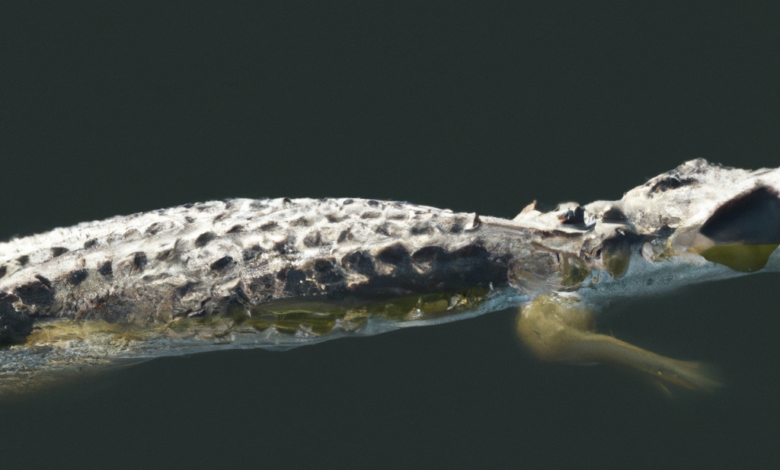The First of Its Kind: Unveiling a Jurassic-Era ‘Sea Murderer’

Welcome, fellow adventurers, to a journey back in time! Today, we are about to uncover the secrets of a prehistoric creature that once roamed the ancient seas. Brace yourselves as we dive into the fascinating world of the Jurassic era and meet the fearsome ‘Sea Murderer’!
The Discovery
Imagine the excitement that filled the air when paleontologists stumbled upon the remains of an extraordinary creature, unlike anything they had ever seen before. The discovery took place in a remote coastal region, where the fossilized remains of this ancient predator were perfectly preserved.
After careful examination, scientists determined that this creature belonged to the Jurassic period, approximately 150 million years ago. Its unique characteristics and predatory nature earned it the nickname ‘Sea Murderer’ – a fitting title for a creature that ruled the ancient oceans.
A Fearsome Predator
The ‘Sea Murderer’ was a formidable predator, equipped with a set of razor-sharp teeth and a powerful jaw. Its streamlined body allowed it to swiftly navigate through the water, making it an efficient hunter. With its keen senses and lightning-fast reflexes, this creature was at the top of the food chain.
But what did the ‘Sea Murderer’ feast upon? Fossil evidence suggests that its diet primarily consisted of smaller marine reptiles and fish. Its teeth, perfectly adapted for tearing through flesh, left no doubt about its carnivorous nature.
Unraveling the Mysteries
As scientists delved deeper into their research, they uncovered fascinating insights into the behavior and lifestyle of the ‘Sea Murderer’. By studying the fossilized remains, they were able to piece together a clearer picture of this ancient predator.
One intriguing discovery was the presence of bite marks on the bones of other marine creatures found in the same area. These bite marks matched the teeth of the ‘Sea Murderer’, indicating that it engaged in fierce battles with its prey. This finding shed light on the hunting strategies and social interactions of this Jurassic-era predator.
Implications for Evolutionary Science
The discovery of the ‘Sea Murderer’ has significant implications for our understanding of prehistoric marine ecosystems and the evolution of marine predators. By studying the adaptations and characteristics of this ancient creature, scientists can gain valuable insights into the evolutionary processes that shaped life on Earth.
Furthermore, the ‘Sea Murderer’ serves as a reminder of the incredible diversity that once existed in our oceans. It highlights the importance of preserving and protecting our marine ecosystems today, as they continue to harbor unique and awe-inspiring creatures.
Conclusion: A Glimpse into the Past
As we conclude our journey into the world of the ‘Sea Murderer’, we are left in awe of the wonders that lie hidden beneath the Earth’s surface. This Jurassic-era predator, with its fearsome reputation and unique adaptations, offers us a glimpse into a time long gone.
Through the meticulous work of paleontologists, we can piece together the puzzle of our planet’s history and gain a deeper appreciation for the incredible diversity of life that has existed throughout the ages. The ‘Sea Murderer’ is a testament to the marvels of evolution and a reminder of the mysteries that still await discovery.
So, fellow adventurers, let us continue to explore, learn, and marvel at the wonders of our world – both past and present!




